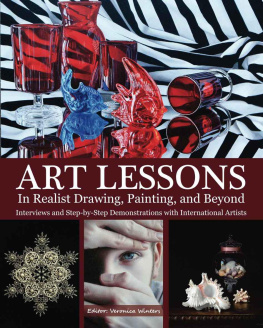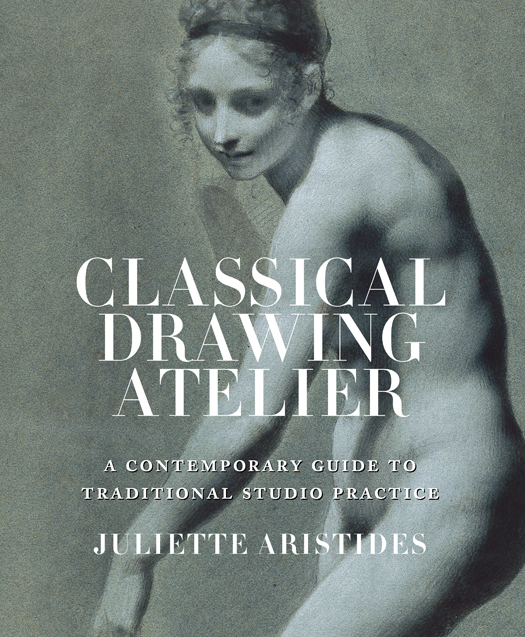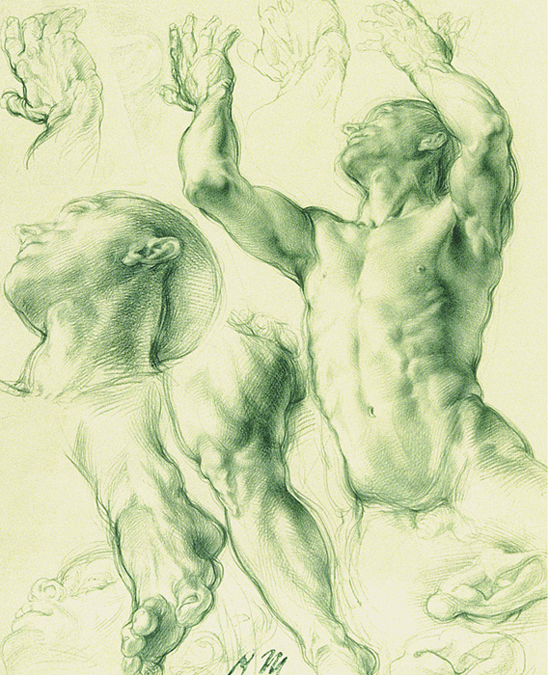Aristides, Juliette.
The classical drawing atelier : a contemporary guide to traditional studio practice / by Juliette Aristides.
p. cm.
Includes bibliographical references and index.
eISBN: 978-0-8230-0837-7
1. DrawingTechnique. 1. Title.
NC 730. A 68 2006
741.2dc22
2006006985
Every effort has been made to trace the ownership of and to obtain permission to reproduce the material in this book. The author, editors, and publisher sincerely apologize for any inadvertent errors and will be happy to correct them in future editions.
All rights reserved.
Acknowledgments
I would like to express my gratitude to all the people who helped make this book possible: thanks to Candace Raney for believing in the merits of this book before there was anything to see; and to Pamela Belyea and Gary Faigin, Director and Artistic Director respectively of the Gage Academy of Art, without whom this project would never have been started. I appreciate the amazing generosity of those who contributed work from private collections, especially Fred and Sherry Ross from Art Renewal Center, and Allan Kollar from A. J. Kollar Fine Paintings. Special thanks to Dino Aristides for your mathematical expertise applied in . Much gratitude goes to Al and Kathy Lopus for being the patron saints of art, in word and deed. I greatly appreciate gallery contributors: Ramon Frey from Frey Norris Gallery; Dr. Gregory Hedberg, Director of the Department of European Art at Hirschl & Adler Galleries; Steven Diamant, Director of Arcadia Gallery; and Nicola Lorenz from Forum Gallery. Thank you to all the models who spent many long hours posing and to the students, photographers, and professional artists who contributed such beautiful work to this book. Special thanks to D. Jeffrey Mims, who provided so much encouragement. Much appreciation goes to Mark D. Mitchell, Assistant Curator of Nineteenth-Century Art at the National Academy Museum. This project could not have been completed without the help of my editors. Many thanks to Sarah Campbell, Sarah Jardine, and Alison Hagge for your valuable insights. I am very grateful to design diva Susan Bari Price for your labor of love in providing tireless assistance on many aspects of this project. Thanks to Carol Hendricks, the Gage Academy resident art historian and friend, for your help with art historical references. Also many thanks to Roy Zuniga for all the Saturdays you spent designing the diagrams, done only for the love of art. Finally, deepest thanks to my teachers to whom I am forever grateful, especially Myron Barnstone, Carlos Madrid, Jacob Collins, and Steven Assael.
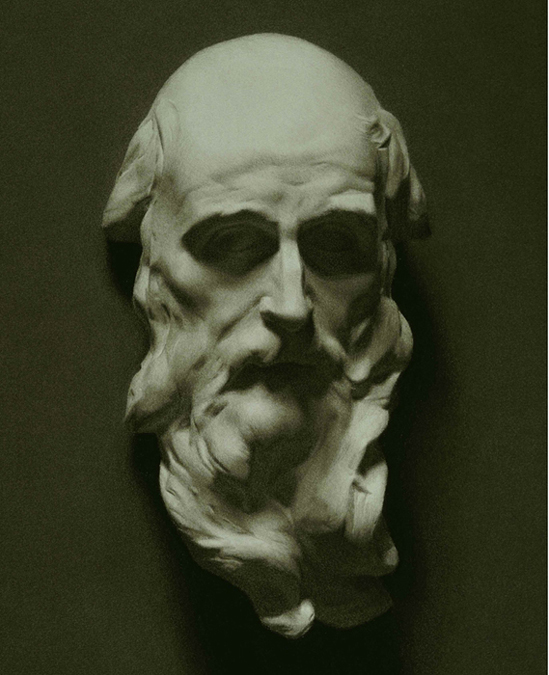
Matthew Grabelsky, cast drawing of Orfeo Bosellis San Benedetto, 2004, charcoal on paper, 24 14 inches, courtesy of the Angel Academy of Art
CONTENTS
CHAPTER ONE: A HISTORICAL PERSPECTIVE
Artistic Training in the Twenty-First Century
CHAPTER TWO: DESIGN
Nature and the Golden Ratio
CHAPTER THREE: LINE
Two-Dimensional Dynamics
CHAPTER FOUR: VALUE
The World in Black and White
CHAPTER FIVE: FORM
The Third Dimension
CHAPTER SIX: MASTER COPY DRAWING
Learning from the Past
CHAPTER SEVEN: CAST DRAWING
Lessons from Master Sculptors
CHAPTER EIGHT: FIGURE DRAWING
Man as the Measure
CHAPTER NINE: PORTRAIT DRAWING
Window to the Soul
CHAPTER TEN: ATELIER DISCIPLINES
Finite Principles, Infinite Applications
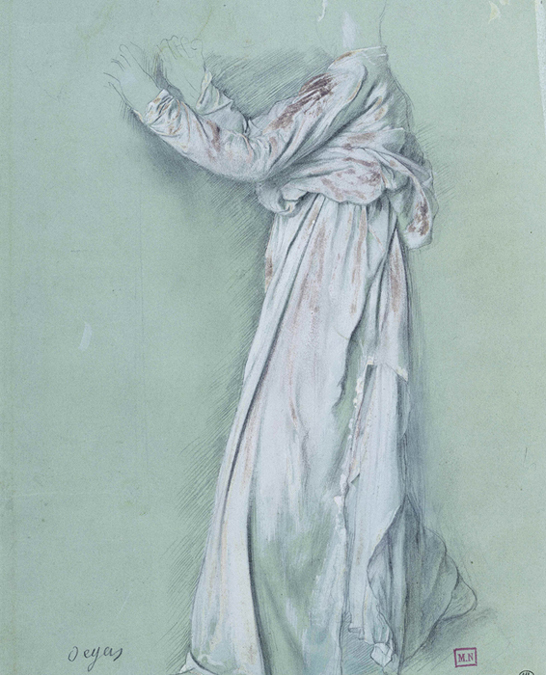
Edgar Degas, Study for the Semiramis, late nineteenth century, gouache on blue paper, with watercolor highlights, 11 x 8 inches, Louvre, Paris, France
Photo Credit: Runion des Muses Nationaux / Art Resource, NY
PREFACE
Drawing is an act of the will. Anyone can learn to draw. It is a matter of acquiring a series of finite skills that then have infinite applications. Once these skills have been mastered they can then be applied in any way the artist envisions. The difficulty often lies not in learning the skills themselves, but in actually applying them. A certain level of competence in drawing can be acquired by those diligent enough to pursue it. Anyone can learn to draw, but it takes both skill and talent to do it well.
Daniel Parkhurst, author and student of the academic painter William Bouguereau, wrote that talent is just another name for the love of a thing. This love gives a person the desire to pursue an objective in spite of obstacles that arise and provides him or her with the stamina necessary for extended study. Just as not every piano student will become a professional pianist, most students of drawing will not become professional artists. However, art affords pleasure to all who study it and increases each students ability to appreciate the art created by others.
The world, both physical and emotional, provides an infinite resource for the artist to reference. In addition, each person born is distinctive in personality and circumstance. These factors combine to create a unique internal landscape, allowing each artist to bring his own singular vantage point to the work. The work of all good artists reveals some aspect of the world that was closed to us before or creates a meeting place where we can identify a kindred spirit. The artists vision shows us a different world by allowing us to see through their eyes for a brief moment as their distinctive and particular vantage point reflects their view of the whole.
The principles discussed in this book form the building blocks of art that, through the artists vision, can be applied with unlimited variety. The face has just a few essential featureseyes, nose, mouth, and earsthat are applied in the human physiognomy with so much variety that we never see the same face twice. So too in art, there are principles that form the foundation of every successful work of art that have been applied and will continue to be applied with a breadth of variety to rival that found in the human race. Mastering the basic principles of art does not limit expression, distinctiveness, or personal freedom in our work. Rather, it strengthens these qualities by giving them structure.



